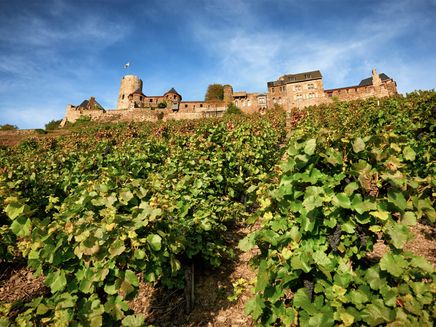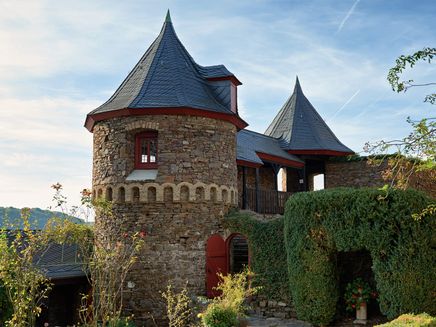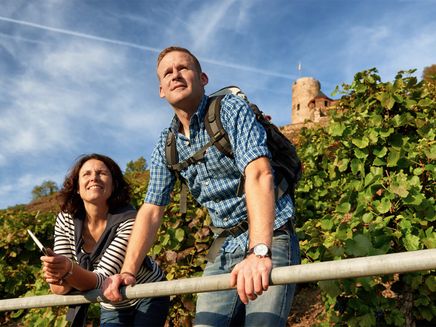Autumn. Warm rays of sun entice lizards to emerge from between the slate stones of vineyard walls. Vine leaves glow golden, and the views are truly magnificent. Near Alken along the Mosel, we follow an old path up onto the Bleidenberg, where a simple, beautiful pilgrimage church from the Middle Ages awaits us. On the other side of the deep river valley next to us stands the medieval castle, Burg Thurant. Nothing reveals that a fierce battle raged here some 800 years ago.
The quite common name “Bleidenberg” refers to the German word “Blide”, a mighty medieval launching weapon that was used to besiege castles and had great accuracy of aim and impact. Exactly the right weapon for the archbishops of Trier and Cologne to strike fear into the heart of the castle lord of Thurant. And such weapons were positioned on this hill, the Bleidenberg. The prince bishops besieged the castle for two years until they finally took it in 1248.
Why the conflict?
Around 1200, a dispute over the throne between the Hohenstaufen and Welf dynasties was raging, which also had repercussions for customs in Germany. Noblemen, including the count palatine at Thurant Castle, took this opportunity to secure new customs revenues. However, this Mosel customs duty was a thorn in the side of Archbishop Engelbert of Cologne. Not only did it have a significant impact on eminent monasteries in the archbishopric of Cologne that had estates along the Mosel from which they obtained their wine, but he also saw his own political interests being affected. So he mounted a campaign against Thurant Castle, conquered it, but quickly lost it again to the palatine count.
His successor, Conrad of Hochstaden, adopted a more astute approach. He allied himself with his colleague from Trier, Archbishop Arnold von Isenburg, and together they overthrew the “robber’s den” once and for all. The castle was divided equally, and the wall separating the two halves can still be seen today. Its present condition is due to the cannon fire of Louis XIV's troops and the automotive pioneer Robert Almers, who bought the castle in 1913 and had it partially rebuilt.
Thurant Castle is still family-owned today, but is open to visitors and for overnight stays.
We continue along our premium hiking trail “Traumpfad Bleidenberger Ausblicke” up the Bleidenberg. It’s just under 13 kilometres long and fairly challenging. Our starting point was at the church in Oberfell, from where we headed up through the vineyards, through shady forests, across flowering meadows and down through the unspoilt Alken Valley. On the way, we visited Thurant Castle, hiked along a narrow trail to the historic St. Michael’s Church and into the wine village of Alken. After a relaxing break, we began our hike up the Sieben Fußfälle via ferrata, which leads through vineyards high up the Bleidenberg. Our next stop is the Bleidenberg Pilgrimage Church. The final descent along this panoramic trail will again offer fantastic views of the Mosel Valley and Thurant Castle before our hike ends back in Oberfell.



